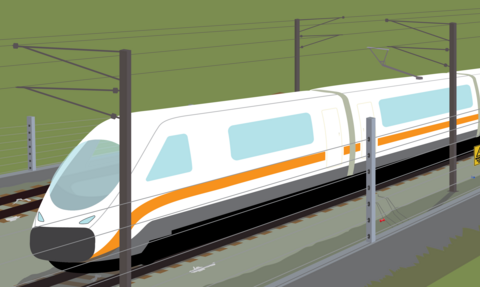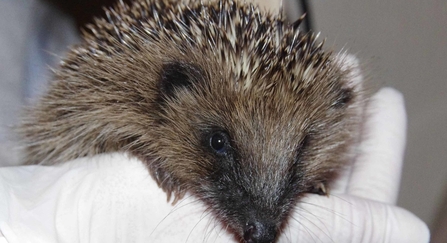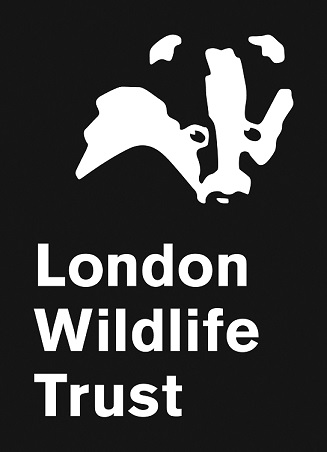
The impact of HS2 on London's wildlife
Ecosystems permanently damaged. Irreplaceable habitats destroyed. Taxpayer's money spent on restoration misplaced. Wildlife extinctions at a local level. This could be nature’s fate if the current plans for HS2 continue.
In an updated published ecological assessment in 2019, The Wildlife Trusts revealed the sheer scale of actual and potential damage from HS2. The report showed that the deep cut HS2 will make across the landscape could significantly prevent nature’s recovery alongside its route. As the costs to nature escalate, we urged the then Prime Minister to use his power to stop and rethink this project, or the scar may never heal.
In February 2019 The Wildlife Trusts delivered a letter to the then Prime Minister calling for the project to be reappraised. The letter was signed by 66,000 people. We were overwhelmed with the support from the public – thank you to all of those who signed the letter.
HS2 and the environment
Hundreds of important habitats and special wild places in England are under threat from the government's proposed High Speed 2 (HS2) rail network. Ancient woodland, lakes, meadows and other important habitats are at risk. Yet, there has not been a Strategic Environmental Assessment and the compensation plans being put forward are not good enough.
The Government and HS2 Ltd acknowledge that the route can't be delivered without extreme harm to the natural environment. Furthermore, it poses a genuine barrier to the urgent action required to recover nature and restore landscapes. The current approach to HS2 means that a viable Nature Recovery Network would be impossible.
The potential damage is too great - especially while we are facing an ecological and climate emergency. We need HS2 Ltd to stop and rethink.
Our position
London Wildlife Trust has objected to the HS2 route since it was first proposed. However, as the scheme developed we have worked to ensure that as best possible the ecological impacts are minimised and that in time, net gains for biodiversity can be secured through its construction and operation in London. We have worked with our sister Wildlife Trusts to ensure these principles are embedded across the whole route.
In London a suite of wildlife sites between West Ruislip and the Colne Valley are being affected by the route, including the Mid-Colne Valley SSSI. London Wildlife Trust sits on the Colne Valley Regional Park Panel which produced an Additional Mitigation Plan in 2017 with proposals both within and outside the present HS2 Bill limits. HS2 Ltd has made an assurance to work with the Panel to deliver the key proposals in the Plan.
While the Trust has been unable to stop the scheme, we believe that our collective action has helped to reduce some of the worst ecological impacts of HS2. We maintain a commitment to pursuing measures to mitigate the impacts on wildlife from the construction of the railway, especially in and around the Colne Valley, although the legal recourse to prevent construction has now been exhausted.
We acknowledge construction of HS2 will mean the loss of and damage to wildlife
The Trust still faces uncertainty over the future of Frays Farm Meadows, one of our nature reserves in the Colne Valley, which might be affected by a proposed haulage road (to carry out materials from tunnel boring). Whilst this may no longer proceed the Trust has had no written confirmation as to the state of play; if it does proceed the Trust has an agreement with the Department for Transport for HS2 Ltd to mitigate and compensate for the damage that may occur and accrue over the period the proposed road would be required (last estimated at nine years).
The Trust recognises that many people are angry and upset at the damage they are witnessing where works have been and are underway. We have always urged these concerns to be allayed to HS2 directly and, if it is felt that legislation is being breached or best practice not carried out on the ground, make sure their local councillors and MPs are also informed. While the Trust has been assured by HS2 Ltd that all the appropriate and legal steps have been undertaken to avoid, reduce or mitigate for the impacts on wildlife, we acknowledge that the construction of HS2 will mean the unavoidable loss of and damage to wildlife habitats especially in the short-term.
We will be working with our sister Wildlife Trusts and others to help scrutinise the development of HS2, and highlight specific concerns over – and opportunities to improve – their ecological performance.
Affected wildlife sites
After initial plans for HS2 suggested that 18 Sites of Importance for Nature Conservation (SINCs) in London would be directly impacted, and 39 more indirectly impacted, the Trust argued that "the current proposed route is likely to have a significant and avoidable impact on the natural environment".
In 2012, in response to views submitted during the first consultation, the government reassessed the route through west London and agreed to place a significant proportion of it in a tunnel. This decision was welcomed by the Trust and meant that several wildlife sites, most notably Perivale Wood, would no longer be affected by HS2. However, the route eventually approved is still likely to impact on 10 SINCs in London, not just directly by the main two-track railway but also the enabling and construction works, for example the boring of the tunnels under much of west London and the Chilterns, and the building of a 3.6km viaduct over the Colne Valley.
Sites of Importance for Nature Conservation (SINCs) in London impacted by HS2
• Regent’s Park
• Chalk Farm Embankment and Adelaide Nature Reserve
• Wormwood Scrubs Park
• Mad Field Covert, Railway Mead and the River Pinn
• West Ruislip Golf Course and Old Priory Meadows
• Brackenbury Railway Cutting
• Newyears Green
• Dew’s Dell, incorporating Dews Farm Sand Pits
• Mid Colne Valley including Broadwater Lake and Frays Farm Meadows
Frays Farm Meadows in Hillingdon lies within the Colne Valley © Mathew Frith
The Trust manages Frays Farm Meadows, a Site of Special Scientific Interest (SSSI) in the Colne Valley. Frays Farm Meadows supports what is probably the largest remaining sedge fen in London; a rare wet grazing meadow that is home to species such as the protected water vole, snipe and slow-worm. In late 2015, HS2 Ltd announced that it intended to build a temporary haulage road that would slice across the eastern boundary of the site, destroying habitat and threatening the entire sedge-beds for which the meadows are designated. Other associated impacts would also significantly harm the site and the species that live there.
Although temporary, the proposed haulage road would be required for up to nine years. The Trust has campaigned to prevent this road being built, and in 2019 there was indication that it would no longer be required, although a formal statement regarding this has not been published. An additional package of mitigation and compensation measures have been promised – in addition to restoring the land over which the road would run to previous condition – if the road were to proceed.
Broadwater Lake
The HS2 route crosses the Mid-Colne Valley SSSI on a 3.6km long viaduct bisecting Broadwater Lake Nature Reserve, managed by Herts & Middlesex Wildlife Trust. The 80-hectare site, which lies within London, is renowned nationally for the diversity of breeding wetland birds and the numbers of wintering waterbirds such as gadwall, shoveler and great crested grebe, and summer moult gatherings of tufted duck. The original HS2 mitigation does not go far enough to reduce the impact of the viaduct, not only on the Lake but also passing birds and bats, hence the proposals to include additional works, including screening, in the Colne Valley Additional Mitigation Plan.

Hedgehog - Gillian Day
Hedgehogs in Regent’s Park
In Regent’s Park, HS2 is threatening to eradicate an area known to be a hedgehog hotspot. The car park in the Outer Circle of the park and its surrounding green areas are proposed to be used as a heavy lorry holding area. This is the only inner London greenspace known to support a breeding population of hedgehogs, currently regarded as “isolated and extremely vulnerable” during a Park survey in 2017. The hedgehog population in the car park area is thought to constitute 27 per cent of the hedgehogs now living in central London (from current data), and had declined further by 2016.
The Zoological Society of London and The Royal Parks are working together to try and ensure the impacts of the HS2 compound at this site are minimised.
